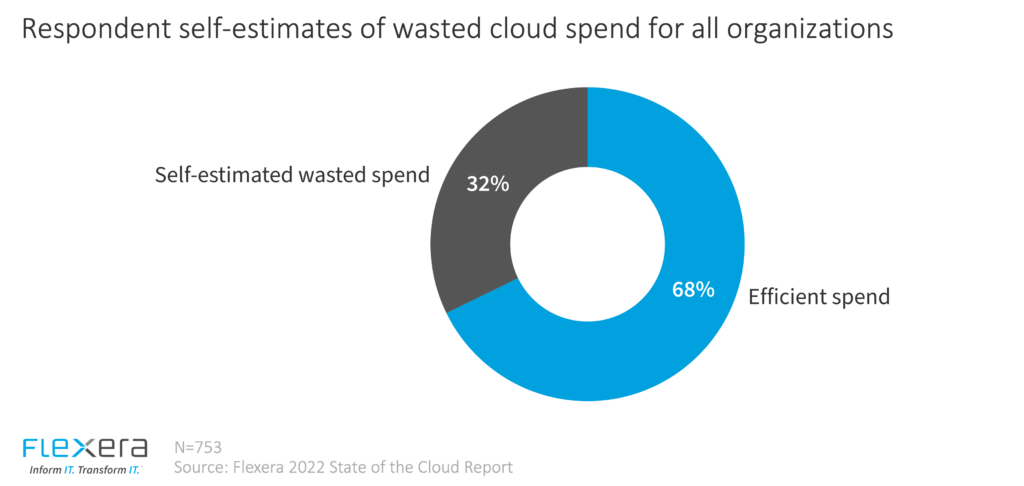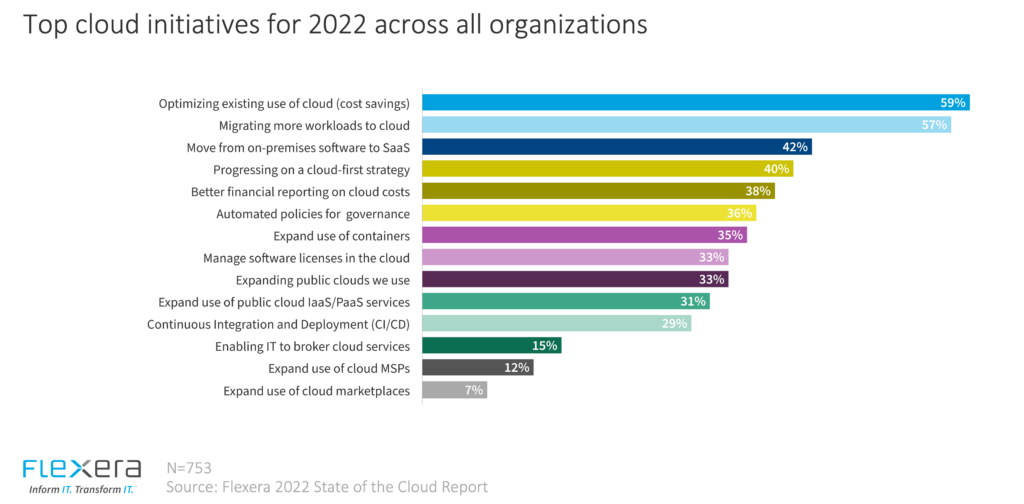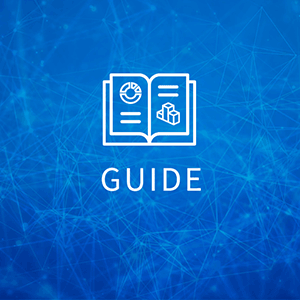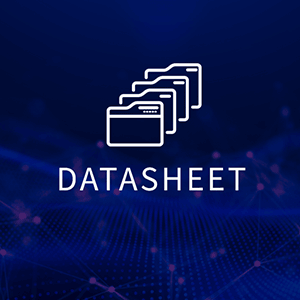In recognition of International FinOps Day, we want to take this opportunity to make the topic of FinOps top-of-mind for those involved with their organization’s cloud journey. As Flexera’s State of the Cloud Report has shown year after year, IT professionals estimate that a significant portion of their cloud budget is wasted—this year the estimate is 32 percent, which is an increase from last year’s 30 percent, and the highest estimate we have seen in all the year’s of the State of the Cloud Report. Given this high level of waste, it’s not surprising the top cloud initiative in the State of the Cloud Report for six years running is optimizing existing use of cloud.

This begs the questions: Why does wasted spend continue to be an issue, what can be done about it and who is involved?
As organizations gain more experience with the cloud and as the offerings from the cloud providers evolve, maturing organizations expand their cloud footprint, resulting in a proliferation of cloud resources. This brings a management and visibility challenge. Enter FinOps. We’ve previously written about how FinOps is at a high level, but wanted to focus here on the needs it addresses and the personas involved.
The FinOps Foundation states that FinOps is not necessarily about saving money, but also about making money—that is, using your cloud spend dollars effectively and efficiently to improve your use of cloud so that the resources you consume are providing the maximum benefit to your organization and/or customers. Spending more money in the cloud can be a good thing if it is indicative of business growth, additional revenue, data center decommissioning, higher SLA conformity, etc. As cloud consumption within an organization increases, the need for visibility into that consumption also increases. It’s no coincidence the first phase of the FinOps framework is Inform.
But who needs to be informed, and how can that data be distributed effectively? The who consists of a much larger group than we’ve experienced in classic data center environments, when costs were frequently rolled up at a business unit level, and if you were lucky, at a department level. The problem with that model is a lack of granularity. With costs consolidated and grouped into large buckets, it was difficult, if not impossible, to identify the big spenders. With FinOps practices in place, and good cloud management hygiene (well-organized account structures, tagging, etc.), virtually any level of granularity is possible, all the way down to application components or even individual users. So, the group of stakeholders that can (and should) be informed of cloud spend is expanded, allowing individuals and teams to see their attributed costs. These stakeholders should include members of the engineering, finance, technology and business teams. This may not be an all-inclusive list, depending on your organization’s structure and breakdown of roles and responsibilities as it relates to financial reporting.
Cloud Management
Take control of cloud use with out-of-the-box and customized policies to automate cost governance, operations, security and compliance.
We can see it, now what?
Once the appropriate stakeholders are informed about their cloud consumption and spend, the process of optimizing that spend (the Optimize phase of the framework) can begin. As we alluded to in our previous blog, giving users visibility into their consumed resources empowers them to identify and address areas of waste and hopefully, drive down that 32 percent estimate discussed earlier. Cloud optimization can be heavily influenced by the utilization of provider discounts to achieve cost savings, such as reserved instances, savings plans and committed use discounts. Many dev/test resources are usually suitable for scheduling, so they aren’t running during off-hours when not needed. The implementation of the FinOps framework can address this overarching need of the organization—maximizing the cost-efficiency of every dollar spent on the cloud. As far as the who in this phase, it’s the usual suspects from the Inform phase, with a focus on the stakeholders who directly influence the provisioning of resources and the utilization of discounts associated with those resources.
And while the intent of this post was not to go into detail on the phases of the FinOps framework, it’s worth mentioning the stakeholders involved in the final phase: Operate. In this phase, automation is put in place to enable and execute on the optimization opportunities uncovered in the prior phase. As such, the operations and/or automation teams are crucial to this step as they have the tools and expertise to deliver on these opportunities. Additionally, this is where objectives are evaluated, and metrics are collected and analyzed so progress against cost optimization initiatives can be tracked. Thus, those responsible for keeping score and reporting those scorecards are critical to this phase of the FinOps journey.
As you progress on your cloud journey, utilizing the principles of FinOps will help you maximize the cost efficiency of your cloud spend, and improve your bottom line. Hopefully when next year’s International FinOps Day rolls around, your FinOps practices are even more polished and evolved, and you are well on your way to optimizing your cloud costs. If you’re ready to take the next step, click here to see Flexera’s cloud cost optimization tool.








